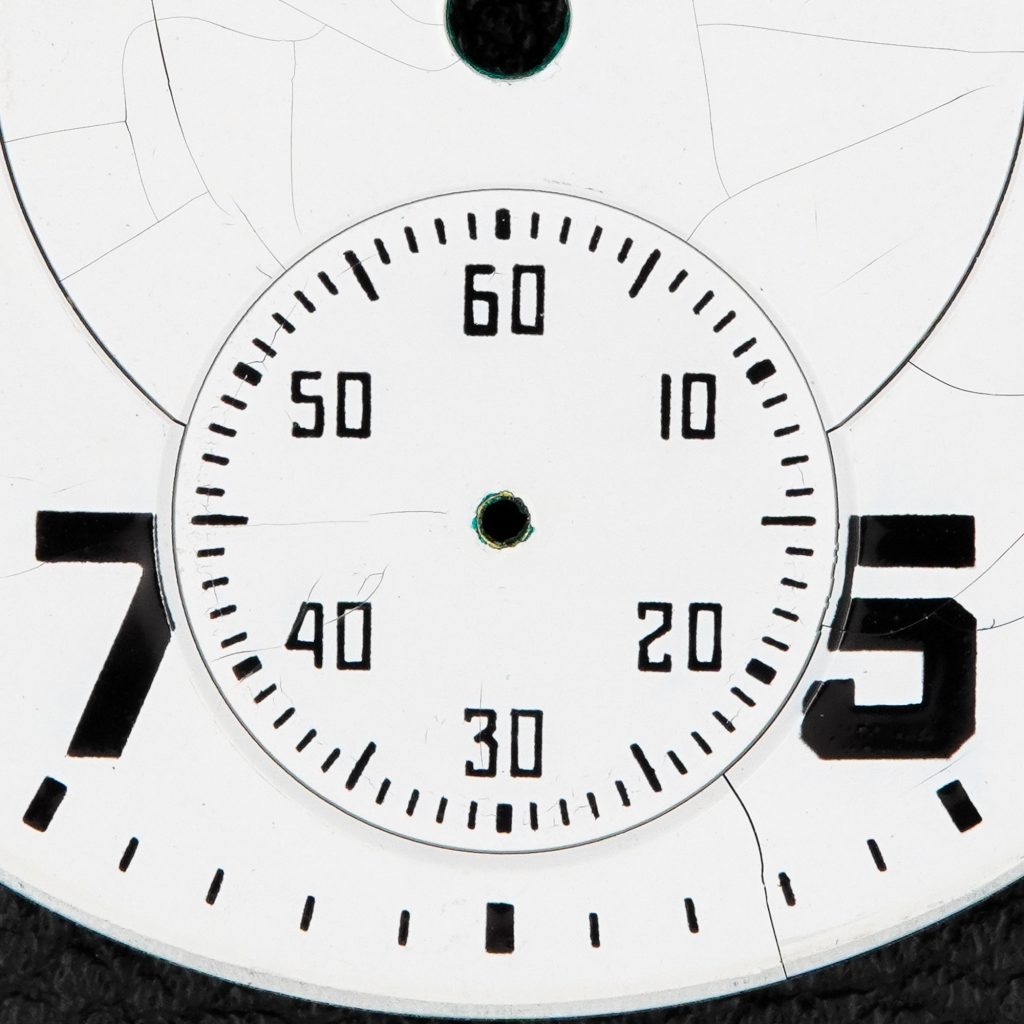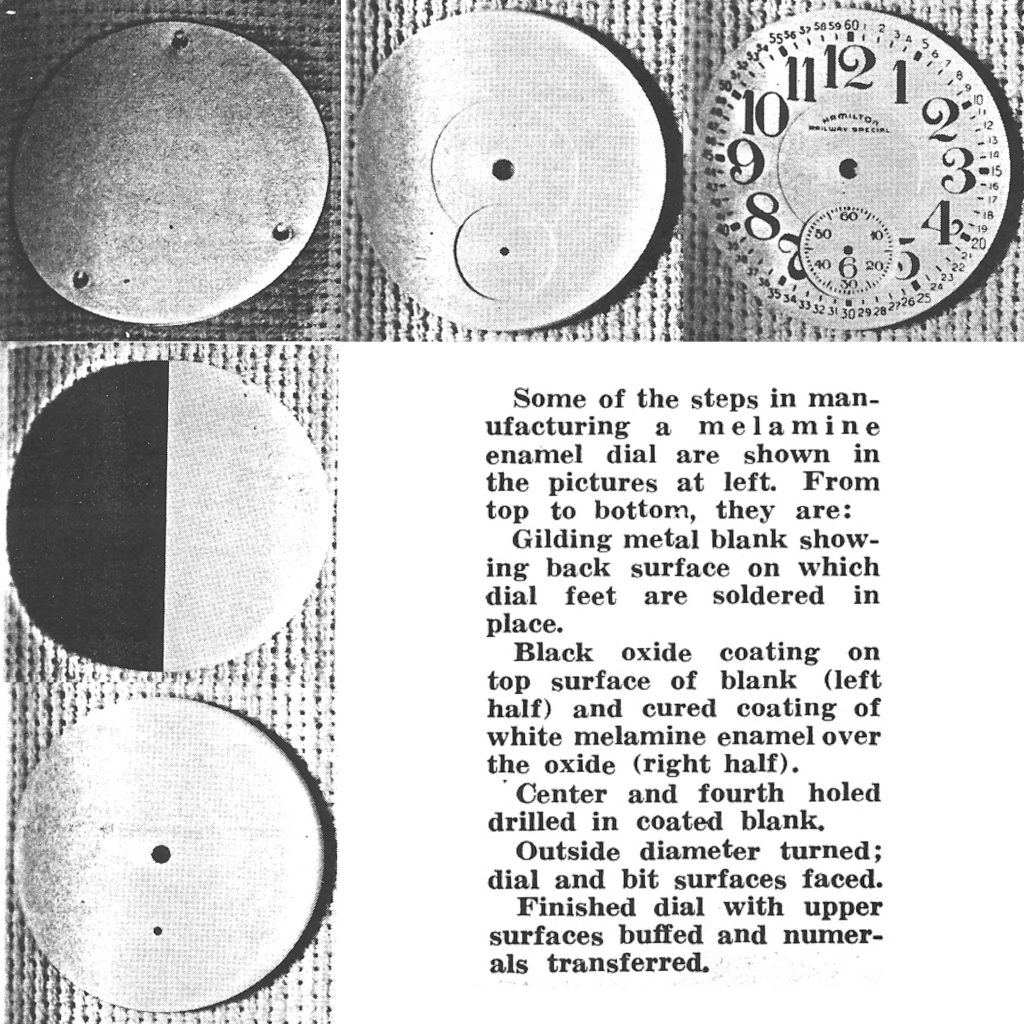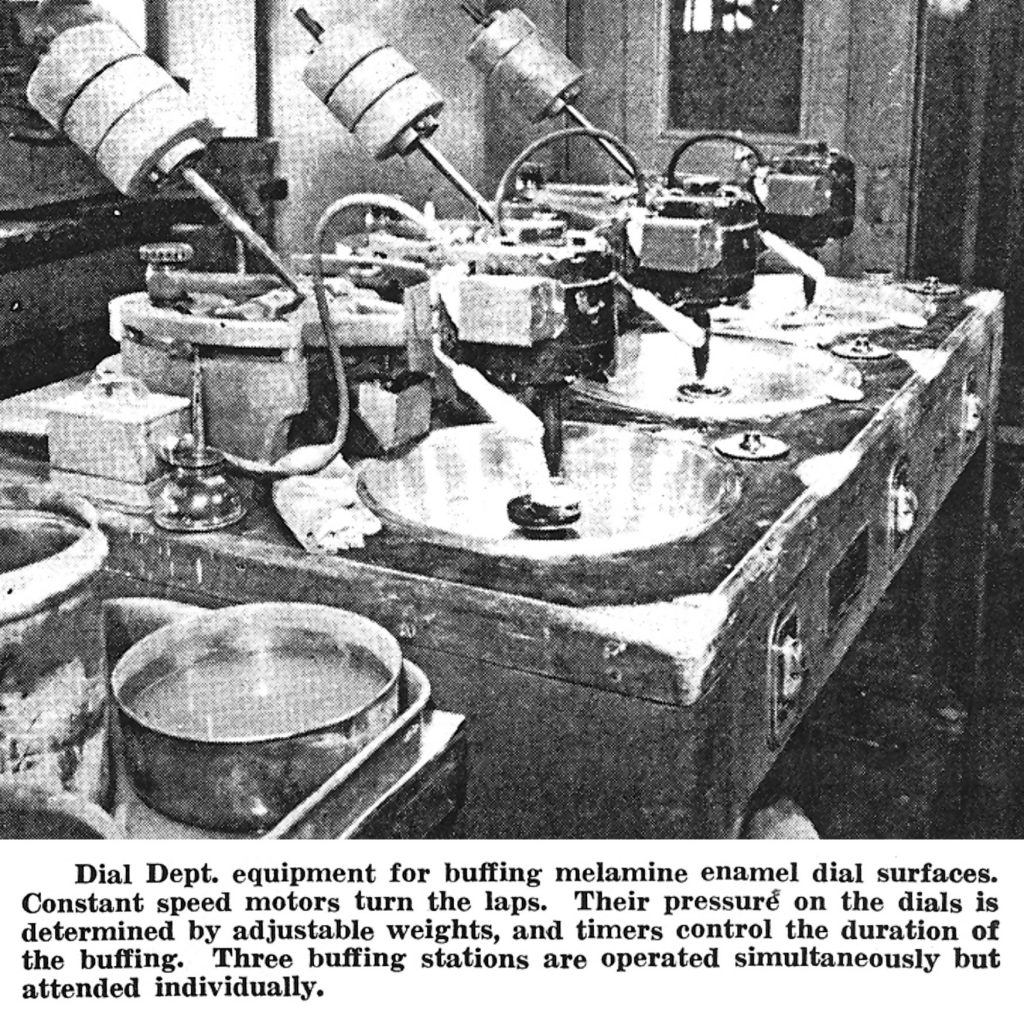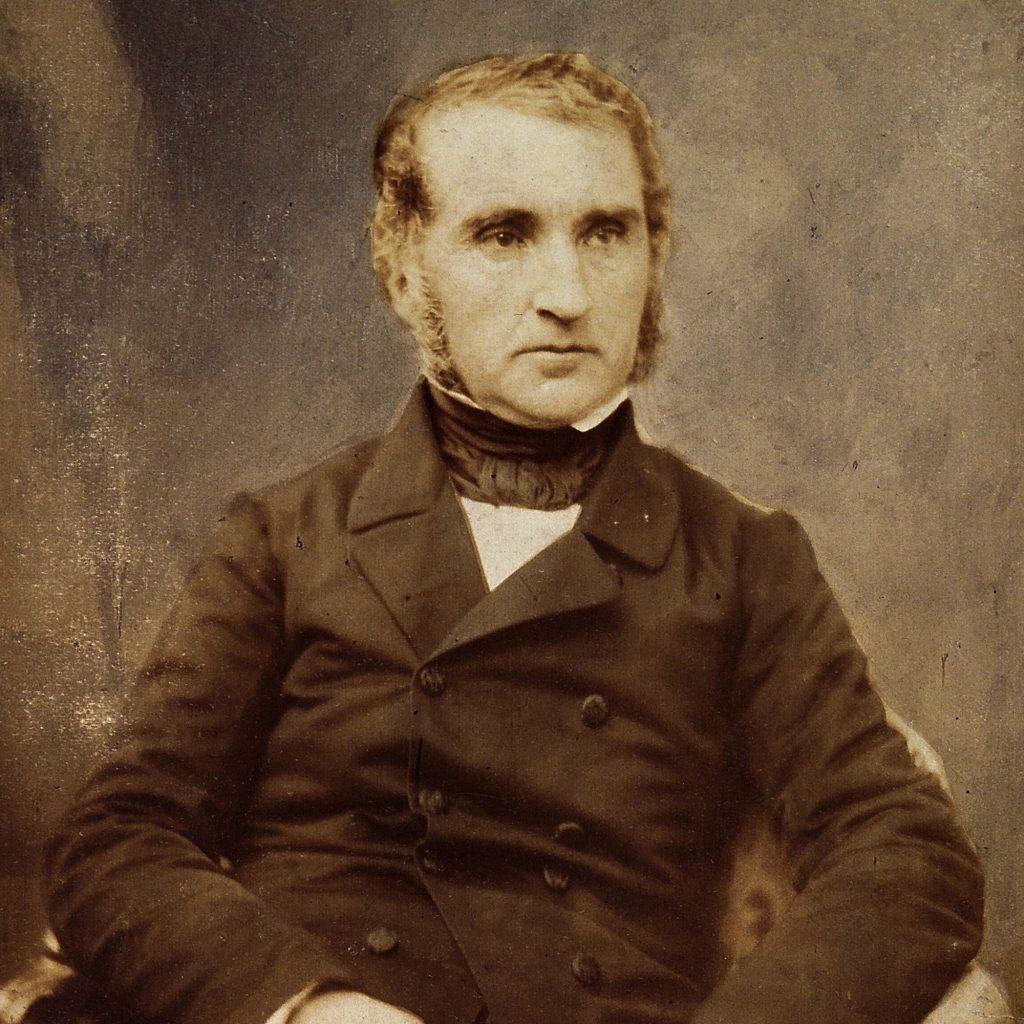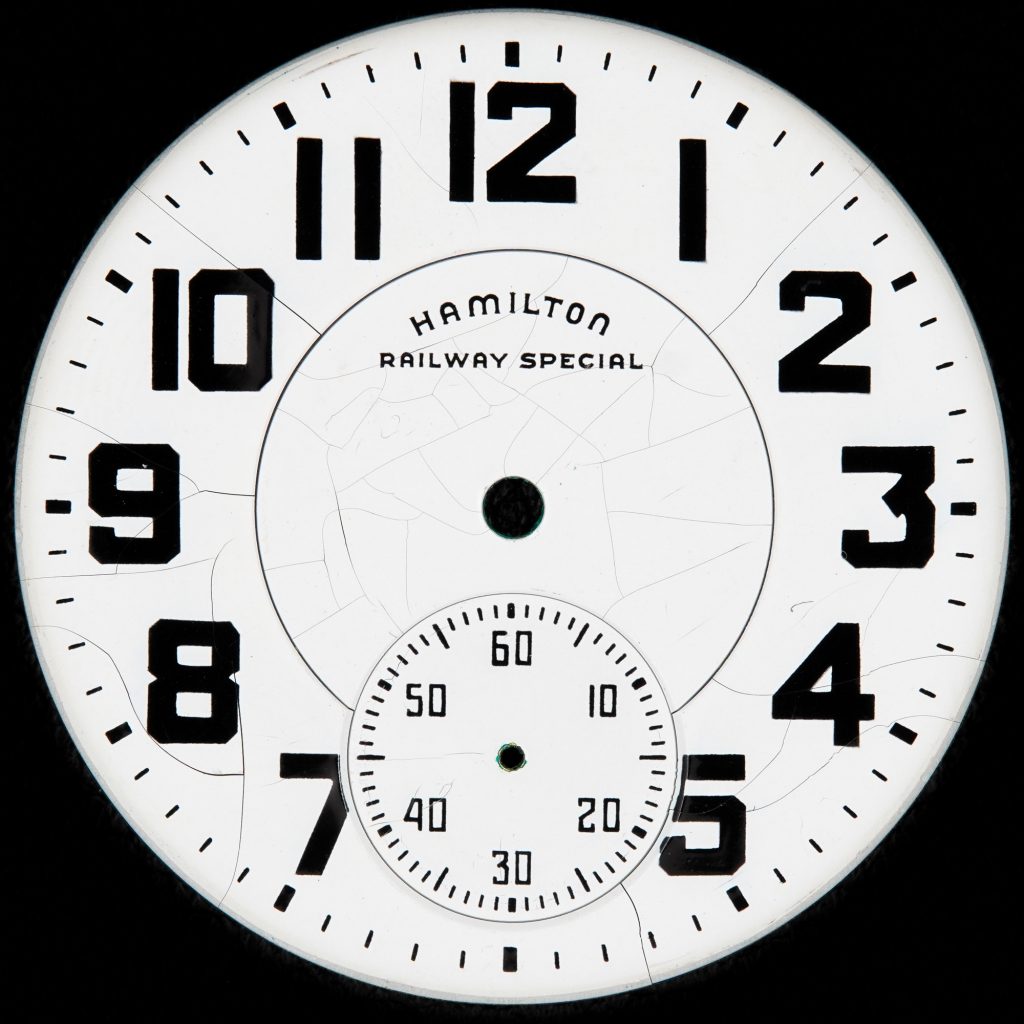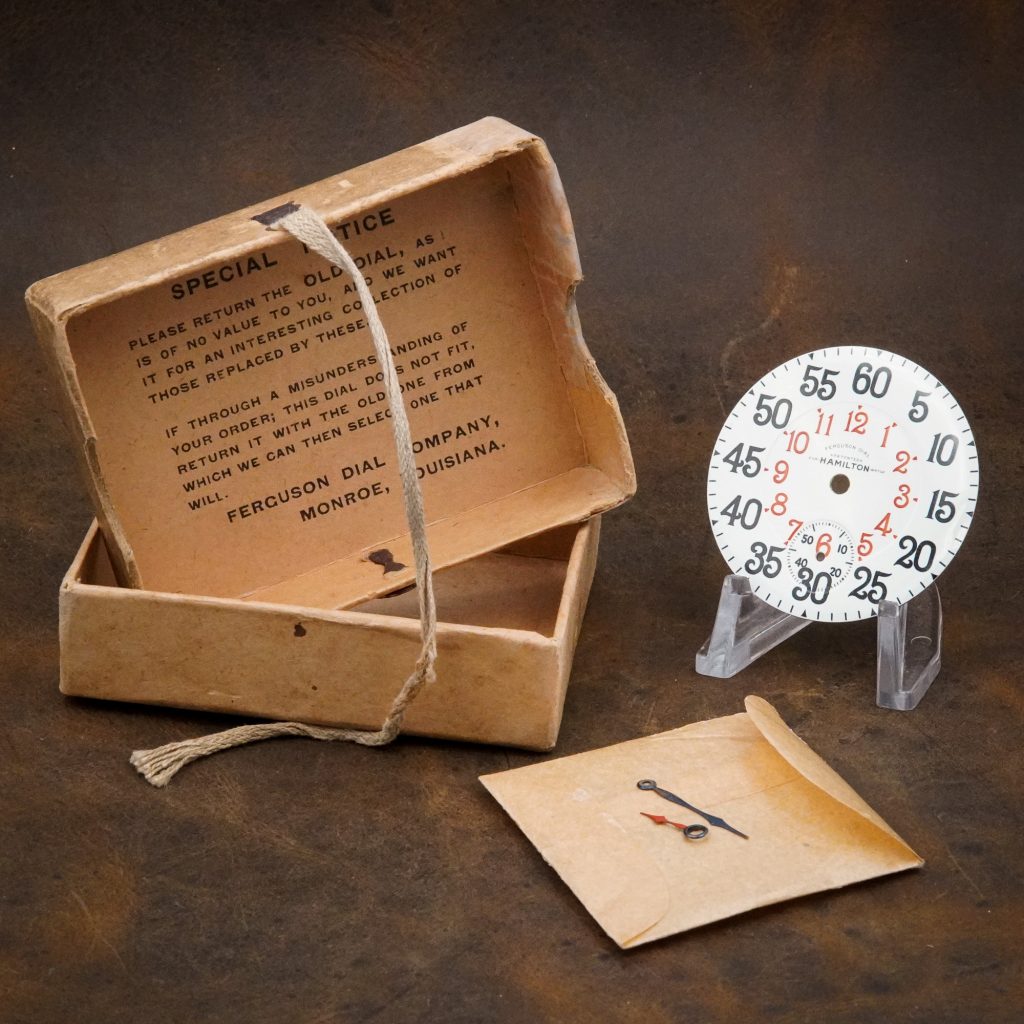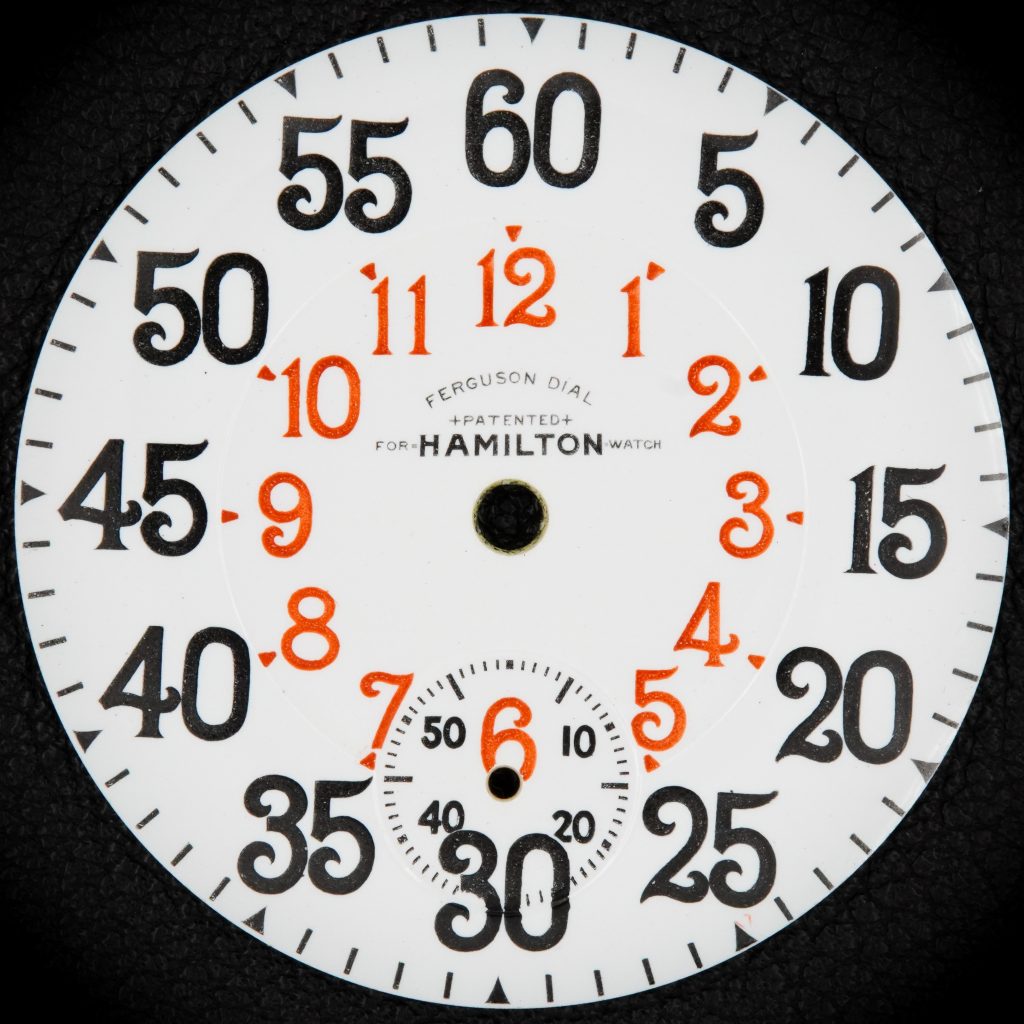Hamilton Watch Co.
Pictured: Melamine Dials Throughout Production, Excerpt from “Research Provides New Materials For R.R. Type Dials,” Timely Topics, July 1953. Following extensive experimentation with nearly forty materials to find a suitable.
Pictured: Melamine Dial Buffing Machines at the Hamilton Watch Company Factory, Excerpt from “Research Provides New Materials For R.R. Type Dials,” Timely Topics, July 1953. Around 1945, the Hamilton Watch.
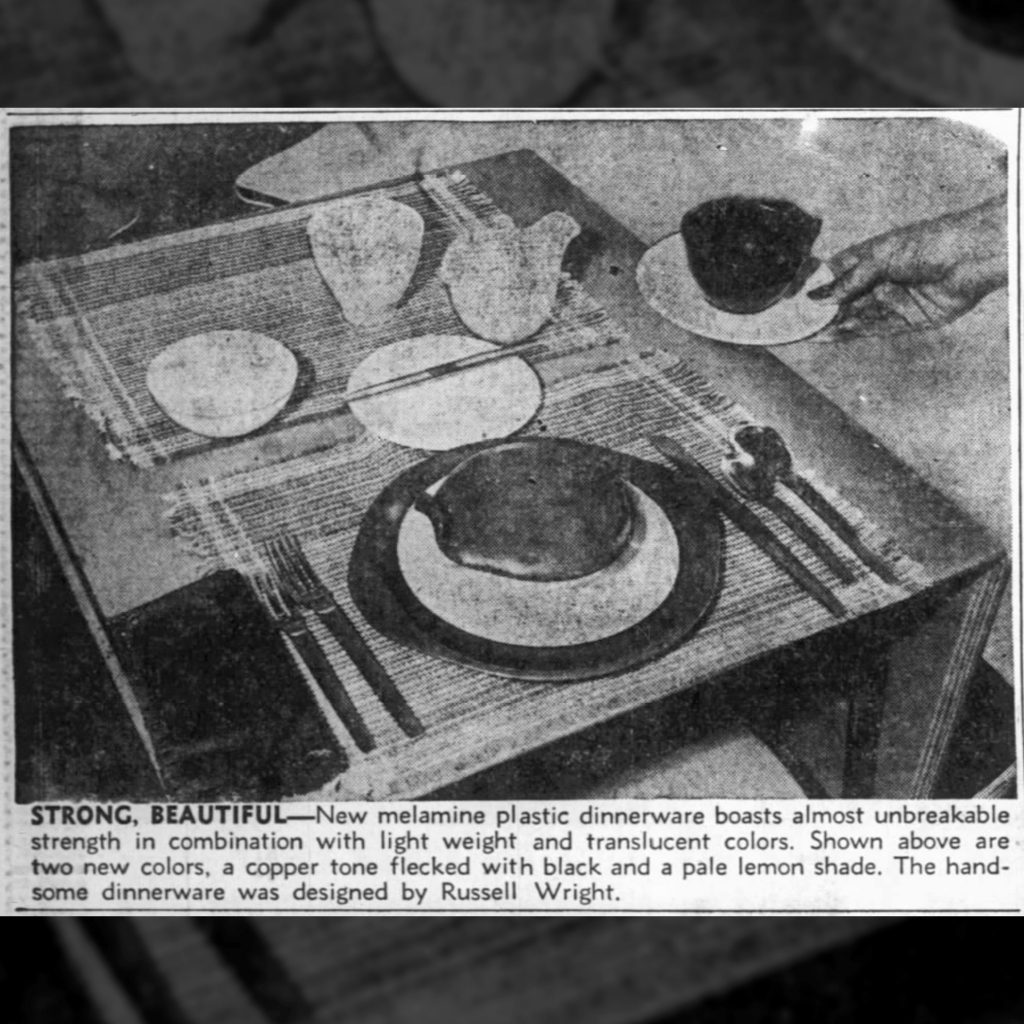
Pictured: Portrait of German Chemist Justus von Liebig The Hamilton Watch Company began exploring alternative materials for watch dials in the 1940s. In October 1946, the company officially adopted melamine.
Pictured: Hamilton Watch Company Melamine Dial Showing Cracks, c.1952. In October 1946, the Hamilton Watch Company began manufacturing watch dials using melamine, a thermoplastic material that had recently been commercialized..
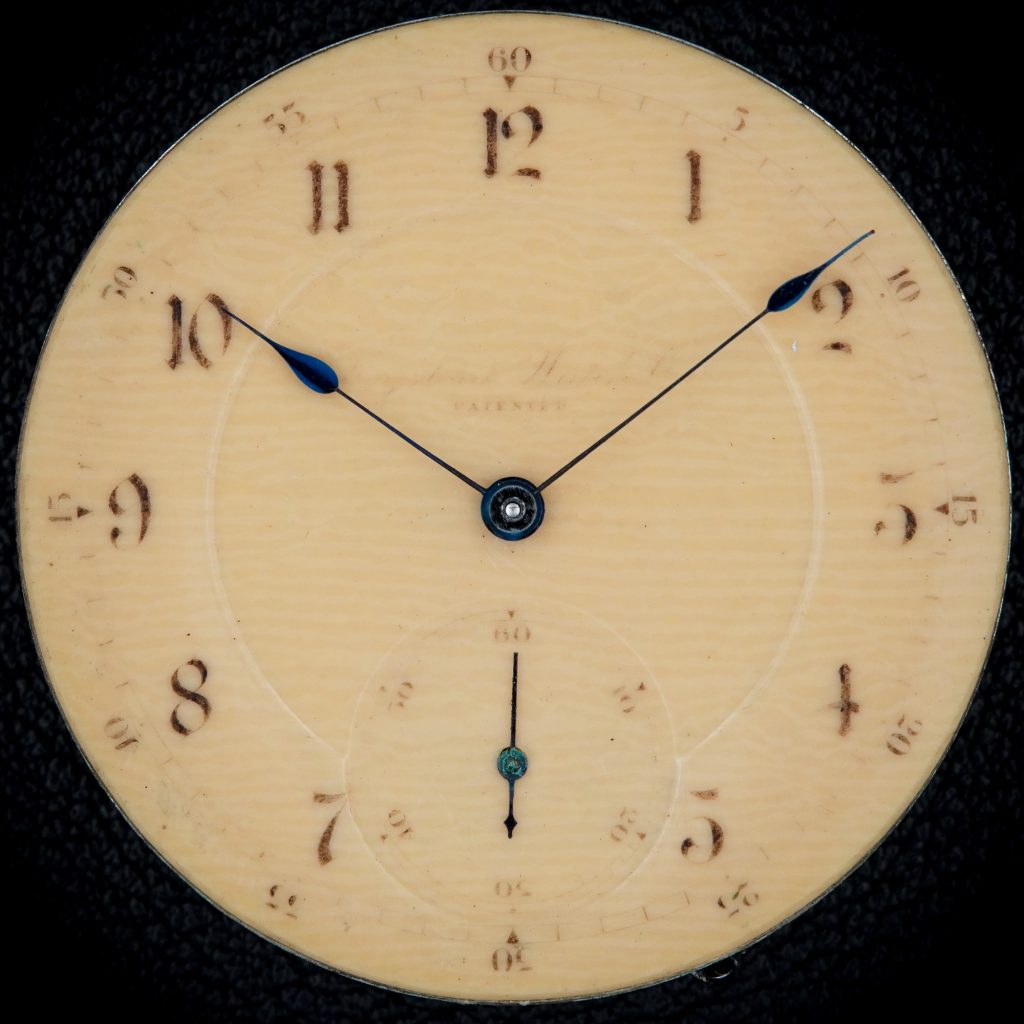
Pictured: Hamilton 8112 Ferguson Dial and Hands with Original Box and Packaging, c.1915. The 8112 Ferguson Dial was originally packaged in a small paperboard box with a patented closure tie..
Pictured: Hamilton 8112 Ferguson Dial, Made for Hamilton Watches, c.1915. Louis Buck Ferguson iterated through several early variants of his unique railroad dial before settling on the design widely recognized.

